The oldest place on Earth
Antarctica may seem like the dead continent, but it once bustled with life — a little of which still survives
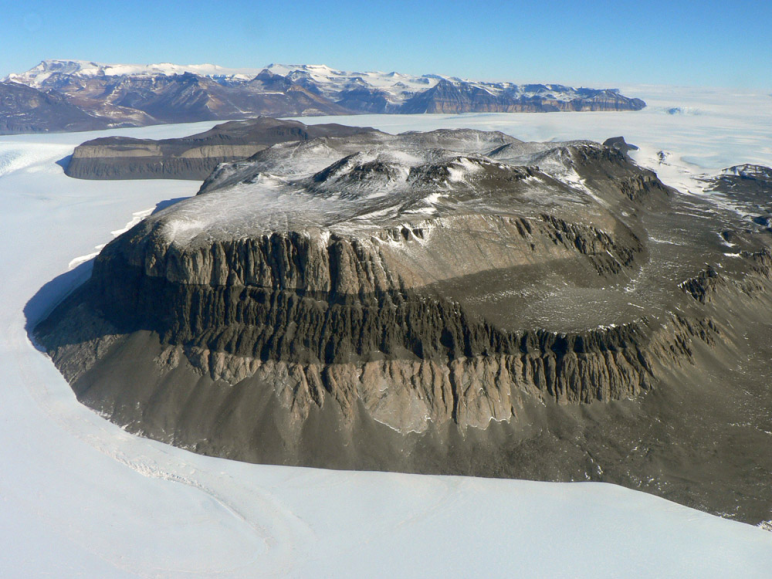
Antarctica’s Friis Hills have changed very little in the past 20 million years — which makes it a prime place for scientists to search for fossils.
ADAM LEWIS/NORTH DAKOTA STATE UNIVERSITY
By Douglas Fox
The Friis Hills in Antarctica are dead and dry, nothing but gravel and sand and boulders. The hills sit on a flattop mountain 60 kilometers from the coast. They are blasted by cold winds that scream off the Antarctic Ice Sheet 30 kilometers farther inland. The temperature here falls to -50° Celsius during winter, and rarely climbs above -5° in summer. But an unbelievable secret hides just below the surface. Adam Lewis and Allan Ashworth found it the day a helicopter dropped them off in the rolling terrain.
They made the discovery back in 2005. After setting up their tent in the whipping wind, the two scientists from North Dakota State University in Fargo began digging around. They could dig only half a meter down before their shovels hit dirt that was frozen solid. But above the icy earth, in those top few centimeters of crumbly dirt, they found something surprising.
Their shovels turned up hundreds of dead beetles, wooden twigs, pieces of dried moss and bits of other plants. These plants and bugs had been dead for 20 million years — or 4,000 times longer than the mummies of Egypt. But it seemed as if they had died only a few months earlier. The twigs snapped crisply in the scientists’ fingers. And when they put bits of the moss in water, the plants puffed up, soft and squishy, like tiny sponges. They looked like moss you might see growing beside a gurgling stream.
Ashworth and Lewis were interested in digging up these bits of ancient life because they reveal how Antarctica’s climate has changed over time. Scientists are also interested in Antarctica’s long-gone life because it provides clues to how Africa, Australia, South America and other continents have slowly shifted their positions over millions of years.
Buttercups and bushes
Antarctica today is barren and icy, with few living things other than sea-dwelling seals, penguins and other birds that gather on the continent’s shores. But the tattered bits of bugs and plants found by Lewis and Ashworth show that it hasn’t always been this way.
Twenty million years ago, the Friis Hills were covered in a carpet of soft, springy moss — “very green,” says Lewis. “The ground was mushy and boggy, and if you were walking around you would have really got your feet wet.” Popping out through the moss were bushes and yellow flowers called buttercups.
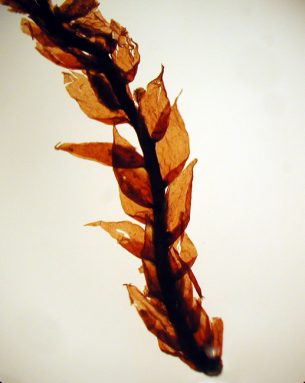
In fact, Antarctica has been fairly warm — at least in the summer — and bustling with life throughout most of its history. Forests of leafy trees once covered the land, including, probably, what is now the South Pole. And dinosaurs roamed the continent, too. Even after dinosaurs disappeared 65 million years ago, Antarctica’s forests remained. Furry animals called marsupials that looked like rats or opossums still scurried around. And giant penguins almost as tall as professional basketball players mingled on the beaches.
Finding signs of Antarctica’s vanished life is challenging, though. Most of the continent is covered in ice up to 4 kilometers thick — as deep as much of the world’s oceans! So scientists must search in the few places, like the Friis Hills, where mountains poke their bare, rocky faces above the ice.
Ashworth and Lewis had an inkling that they would find something in the hills before they even landed there. A story told to them by retired geologist Noel Potter, Jr., had raised their hopes.
Potter had collected sand from the Friis Hills in the 1980s. When he looked at the sand through a microscope back in his lab at Dickinson College in Pennsylvania, he found what looked like tiny wisps of dried plants not much bigger than a grain of sand.
Potter’s first thought was that some tobacco from the pipe he was smoking had fallen into the sand. But when he put some of his tobacco under the microscope, it looked different from what he had found in the sand. Whatever that dried, wispy stuff was, it had to have come from Antarctica — not his pipe. It was a mystery that Potter never forgot.
When Lewis and Ashworth finally arrived at the Friis Hills, it took them only a couple of hours to find more of the ancient dried plants that Potter had first glimpsed 20 years earlier.
Elevator mountain
It’s amazing that these delicate plants were preserved at all, says Lewis. The site where they lie buried is a tiny island of rock surrounded by a sea of destruction. Rivers of ice 600 meters thick have flowed around the Friis Hills for millions of years. Called glaciers, they crush everything in their path.
But among this unfolding destruction, the mountain that the Friis Hills sit atop did something amazing: It rose like an elevator.
This lift happened because the glaciers flowing around the mountain were ripping away billions of tons of rock and carrying it into the ocean. As the weight of that rock was removed from around the mountain, the surface of the Earth sprang back up. It rose, in slow motion, like the surface of a trampoline from which you’ve removed a pile of rocks. The mountain rose less than a millimeter per year, but over millions of years, that added up to hundreds of meters! This little mountain platform lifted to safety its delicate treasure above the rampaging glaciers.
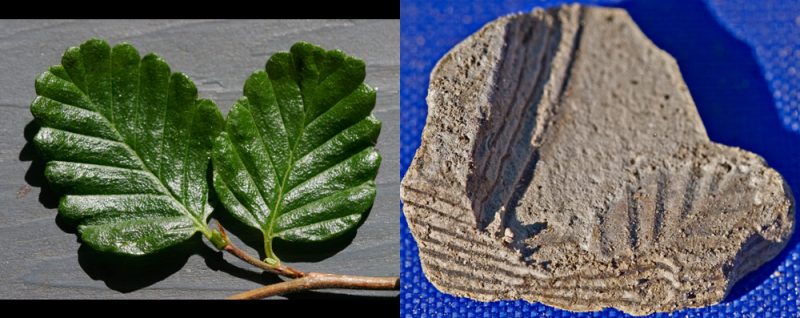
For Lewis, it brings back memories of an old TV show in which explorers stumbled into a secret valley where dinosaurs still existed. “You know those old cartoons, The Land that Time Forgot? This really is that,” he says. “You have this little core of an ancient landscape, and you lift it up, you make it very cold, and it just sits there.”
The cold and the dry kept the dead stuff from rotting. The lack of water also kept the remains from fossilizing — a process in which dead things like leaves, wood and bones gradually harden into stone. So, bits of dried plants that are 20 million years old still puff up like SpongeBob when placed in water. And the wood still smokes if you try to light it on fire. “It’s so unique,” says Lewis — “so bizarre that it actually survived.”
Ancient forests
Life in Antarctica has been around a lot longer than 20 million years, though. Paleontologists have discovered forests turned to stone, or petrified, on bare, rocky slopes in the Transantarctic Mountains, just 650 kilometers from the present-day South Pole. Between 200 and 300 million years ago, stands of trees grew up to 30 meters, as tall as a 9-story office building. Walk through one of those old groves today and you can see dozens of petrified tree stumps still rooted in stone that once was muddy soil.
That petrified mud is littered with the imprints of long, skinny leaves. Scientists think that the ancient trees lost their leaves during the winter, when 24-hour darkness fell on the forest for three or four months. But even if it was dark, it wasn’t too cold for life. Trees growing today in Arctic forests are often hurt by winter freezing; the damage shows up in tree rings. But scientists don’t see evidence of frost damage in the tree rings of the petrified stumps.
Scientists have found fossils of many plants and animals that lived in these Antarctic forests. Two of the fossils have helped reshape our understanding of Earth’s history. One is from a tree called Glossopteris with long, pointed leaves. The other fossil comes from a heavyset beast called Lystrosaurus. The size of a large pig and covered in scales like a lizard, this creature chomped on plants with its beak and used powerful claws to dig burrows in the ground.
Scientists have unearthed Lystrosaurus bones in Antarctica, India and southern Africa. Glossopteris fossils are found in those same places, plus South America and Australia.
At first, when you look at all those places where those fossils have been found, “it doesn’t make sense,” says Judd Case, a paleontologist at Eastern Washington University in Cheney. Those pieces of land are scattered across the globe, separated by oceans.
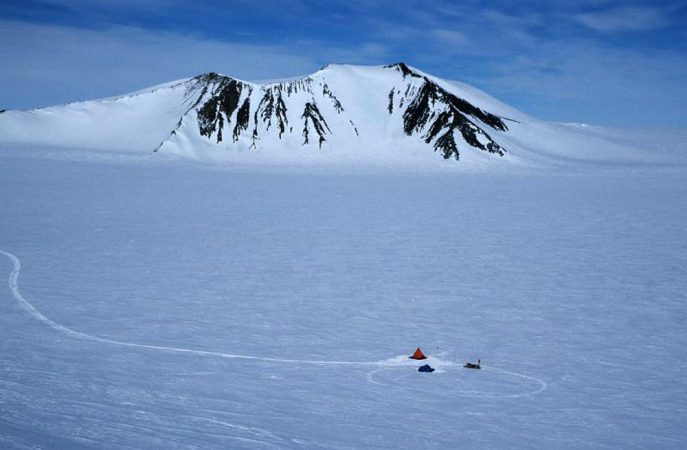
But those fossils helped lead geologists to a surprising conclusion in the 1960s and 70s.
“At some point these continents had to have been together,” says Case. India, Africa, South America and Australia were once connected to Antarctica like puzzle pieces. They formed a single huge southern continent called Gondwana. Lystrosaurus and Glossopteris lived on that continent. As India, Africa and other pieces of land broke away from Antarctica and drifted north one-by-one, they carried fossils with them. Geologists now refer to this movement of landmasses as continental drift.
Final breakup
Gondwana’s breakup happened gradually. When dinosaurs roamed Earth between 200 million and 65 million years ago, some of them made their way to Antarctica across land bridges that still existed between continents. Later came the furry animals called marsupials.
Everyone knows marsupials; this group of animals includes the cute Australian critters, such as kangaroos and koalas, that carry their young in pouches. But marsupials didn’t actually start out in Australia. They first arose in North America 90 million years ago. They found their way to Australia by migrating down through South America and wandering across Antarctica, says Case. He has dug up plenty of marsupial skeletons in Antarctica. The primitive animals look a bit like modern-day opossums.
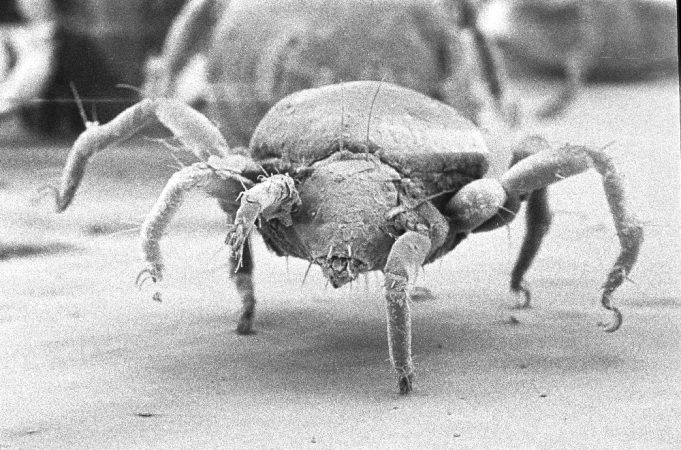
About 35 million years ago, this cross-continental traveling came to an end when Antarctica separated from its last neighbor, South America. Ocean currents circled Antarctica, now alone at the bottom of the world. Those currents insulated it from warmer parts of the world the way that a Styrofoam ice chest keeps cool drinks from warming on a summer day.
As Antarctica’s temperatures plunged into a deep freeze, its thousands of species of plants and animals died off over time. Those green meadows that Ashworth and Lewis found were one of life’s last gasps before it was snuffed out by the cold. Twigs unearthed by the scientists belonged to southern beeches, a type of tree that still survives in New Zealand, South America and other parts of the ancient supercontinent.
Last survivors
But even today Antarctica isn’t completely dead. Ride a plane over its sea of white to a place where a nubbin of bare rock pokes out of the ice. Maybe that rock is no larger than a basketball court. Maybe there isn’t another bit of ice-free rock for 50 to 100 kilometers in any direction. But climb onto the rock and find a crack where a faint crust of green algae stains the dirt. Pry up that crust.
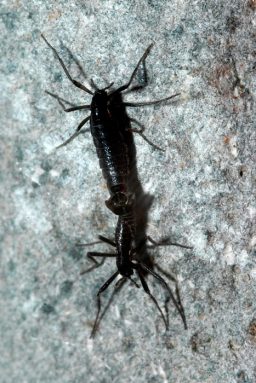
Underneath, you’ll find a few creepy-crawlies: some worms, tiny flies, six-legged critters called springtails or little animals called mites that have eight legs and are related to ticks. One type of mite grows to a quarter the size of a grain of rice. Peter Convey, a polar ecologist with the British Antarctic Survey in Cambridge, likes to call it the “elephant” of Antarctica’s inland ecosystem — because it is one of the largest animals that live there! Some of the other creatures are smaller than a grain of salt.
These animals may spread by wind from one exposed peak to another. Or they may catch rides on the feet of birds. “Our best guess is that most of the animals have been there for millions, if not tens of millions of years,” says Convey. A few species have probably been residents of Antarctica since before it separated from the other continents.
During that time they had to survive many ice ages, when the ice was even thicker than today and fewer peaks were exposed. In those hard times, even a single dusty stone fallen onto a glacier could have provided a temporary home for a few lucky mites.
It’s true that Antarctica is a harsh place. But as Ashworth, Lewis and Case have found, the signs of its vanished life have been slow to fade. And even today, a few hardy animals hang on.
Power words
algae Single-celled organisms, once considered plants, that grow in water.
continent One of the seven largest bodies of land on Earth, which include North America, South America, Africa, Australia, Antarctica, Asia and Europe.
continental drift The slow movement of Earth’s continents over tens of millions of years.
ecosystem A community of organisms that interact with each other and with their physical environment.
glacier A river of solid ice that flows slowly through a mountain valley, moving anywhere from a few centimeters to a few meters per day. The ice in a glacier is formed from snow that has been gradually compressed by its own weight.
Gondwana A supercontinent that existed in the southern hemisphere until about 150 million years ago. It included what is now South America, Africa, Madagascar, Antarctica, Australia, New Zealand, Tasmania, India and parts of Southeast Asia.
ice age A period of time, lasting tens of thousands of years, when Earth’s climate cooled and ice sheets and glaciers grew. Many ice ages have occurred. The last one ended about 12,000 years ago.
ice sheet A large cap of glacial ice, hundreds or thousands of meters thick, that can cover many thousands of square kilometers. Greenland and Antarctica are almost entirely covered by ice sheets.
Lystrosaurus An ancient plant-eating reptile that walked on four legs, weighed about 100 kilograms and lived 200 to 250 million years ago — before the age of dinosaurs.
marsupial A type of furry mammal that feeds its young with milk and usually carries its young in pouches. Most of the large, native mammals in Australia are marsupials — including kangaroos, wallabies, koalas, opossums and Tasmanian devils.
microscope A piece of laboratory equipment for looking at things that are too small to see with the naked eye.
mite A tiny spider relative that has eight legs. Many mites are so small that they can’t be seen without a microscope or magnifying glass.
moss A type of simple plant — without leaves or flowers or seeds — that grows in wet places.
springtail A group of six-legged animals distantly related to insects.







